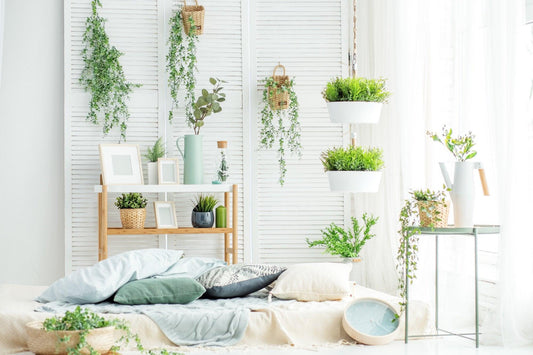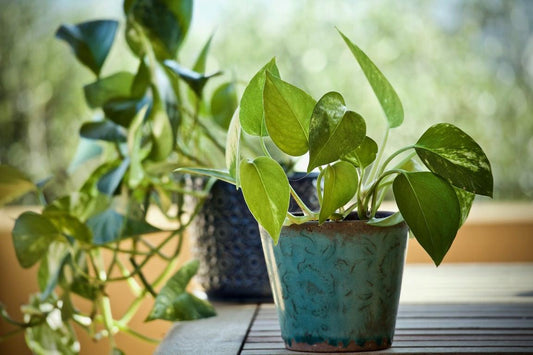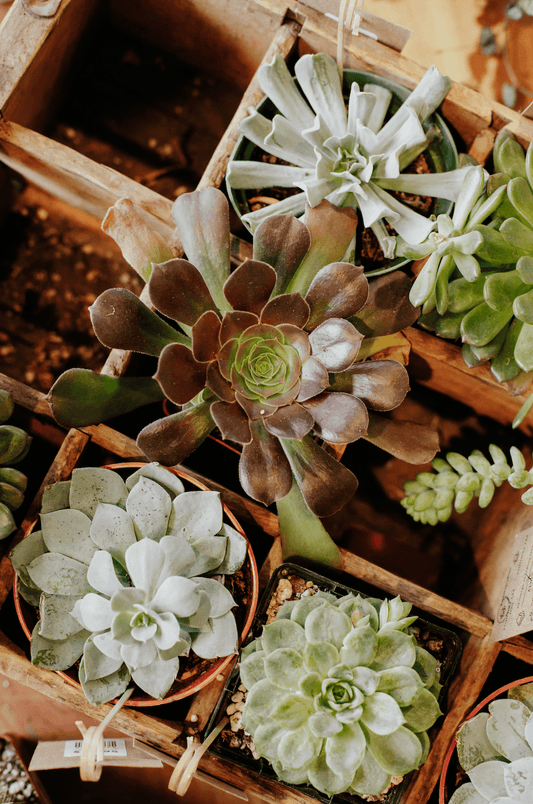Our Winter Guide: How to take care of your plants this season
The winter signals a time of change. The air gets colder, snow falls, lakes freeze, nature loses its greenery and leaves fall away. Many of us know it well, and plants are no stranger either. Plants grow in cycles that follow the changes of their natural environment. Some grow in the tropics where there is not much difference between seasons, while some enter a dormant period during the winter. While it is difficult to recreate the exact conditions of a plants natural environment, there are a few general things you can do to help your plants thrive this winter.
Supplies You May Need:
Steps to Keeping a Happy Plant in the Winter:
1. Decrease Watering
Just like how the seasons change, so does a plant’s care needs. Some plants go dormant in the winter, similar to how a bear hibernates. This means plants are not growing at the same rate as they are in the spring and summer because they are not receiving the same amount of sunlight. With less sunlight also means giving your plant less water.
Giving your plant too much water can lead to root rot and disease. While every plant is different, in general, it is a good idea to wait until the top 2 inches of soil are dry. If leaves start to droop and the soil is dry, this can be a good sign that the plant is thirsty. If leaves start to droop and the soil is wet, this can be a good sign your plant is being overwatered.
2. Maintain House Temperatures
Extreme temperature changes can shock plants, so maintaining the temperature in your home can be important to their winter survival. Most plants like to live in temperatures around 65 to 75 Fahrenheit. To keep them from getting too cold, make sure plants are away from windows or doors with cold drafts. Keep in mind, however, that plants still need a good amount of sunlight. Try and find a place away from drafty windows that still maintains bright indirect sunlight. If there aren’t any good places other than windows in your house, using a grow light can be a great alternative.
On the other extreme, you also want to make sure your plants aren’t too close to heat sources such as vents and fireplaces as this can shock your plants just as much as cold air.
3. Increase Humidity
You may need to water less, but this doesn’t mean they need less humidity. The winter time can bring about dry air, leaving your plants reaching for moisture. To help your plants thrive, try adding a humidifier to the room holding your plants.
As an alternative to a humidifier, you can also try placing a tray of water and rocks around your plants. This will create a great environment directly around your plants and provide the moisture they need.
Make sure to turn off the humidifier in spring and summer, since this can be too much moisture and promote fungus and mold.
4. Prune Old Leaves
Pruning your plants at the beginning of winter, is a great time because it is all about conserving energy. In winter, plants will not be receiving the same amount of nutrients as it would in the summer and needs to conserve what it does have. By pruning yellowing or dying leaves, you can ensure that your plants energy is going to the parts that matter.
To prune your plant, cut yellowing leaves just behind the head of the leaf, leaving the stem intact. If both the stem and leaf are dying, you can go ahead with a sharp, clean pair of scissors, snip the stem from the base at the soil, and remove the dead section.
For more helpful tips on plant care, follow us on Instagram @topterracotta. You can also subscribe to our mailing list for news, updates, helpful content, and exclusive deals.




